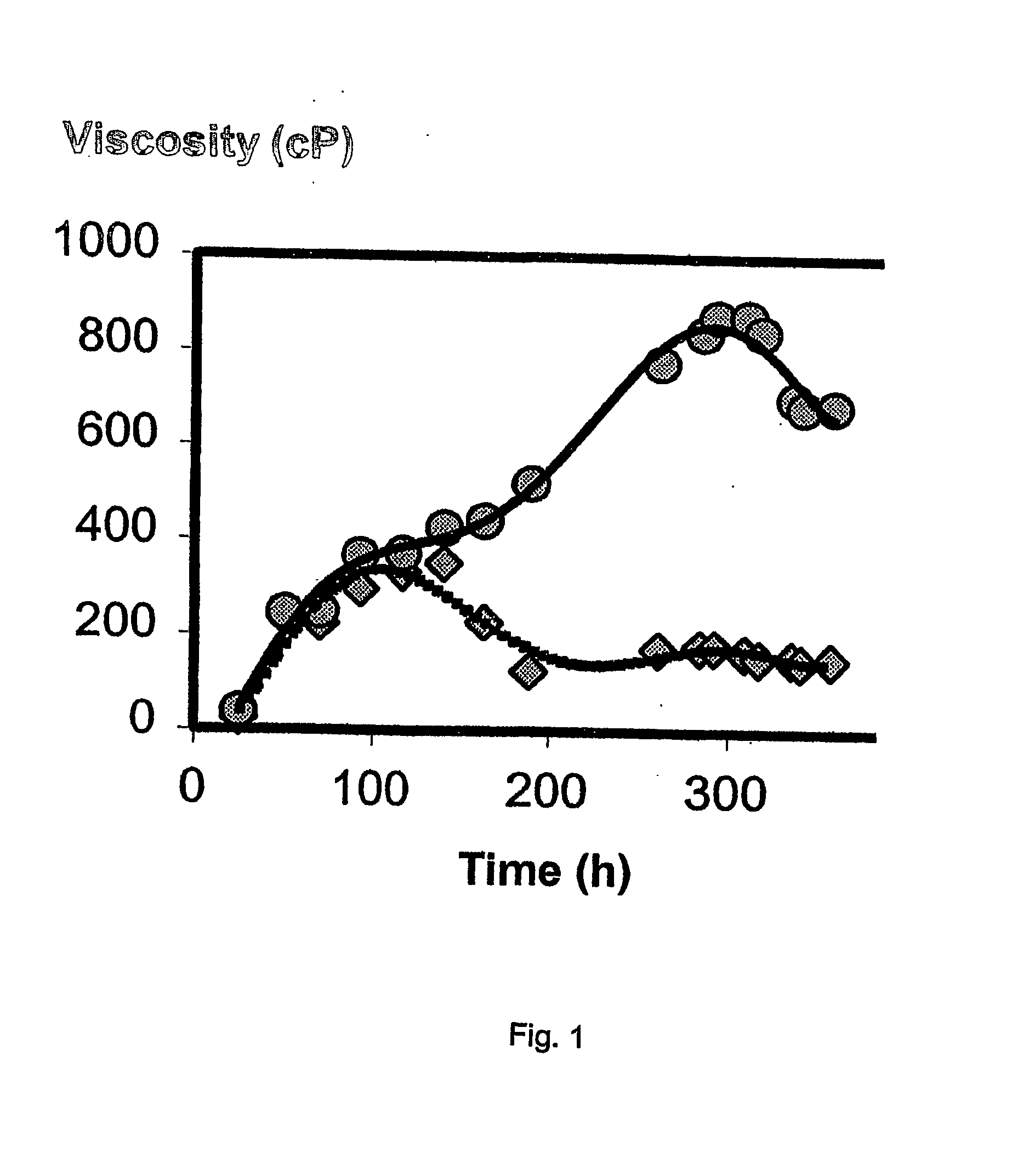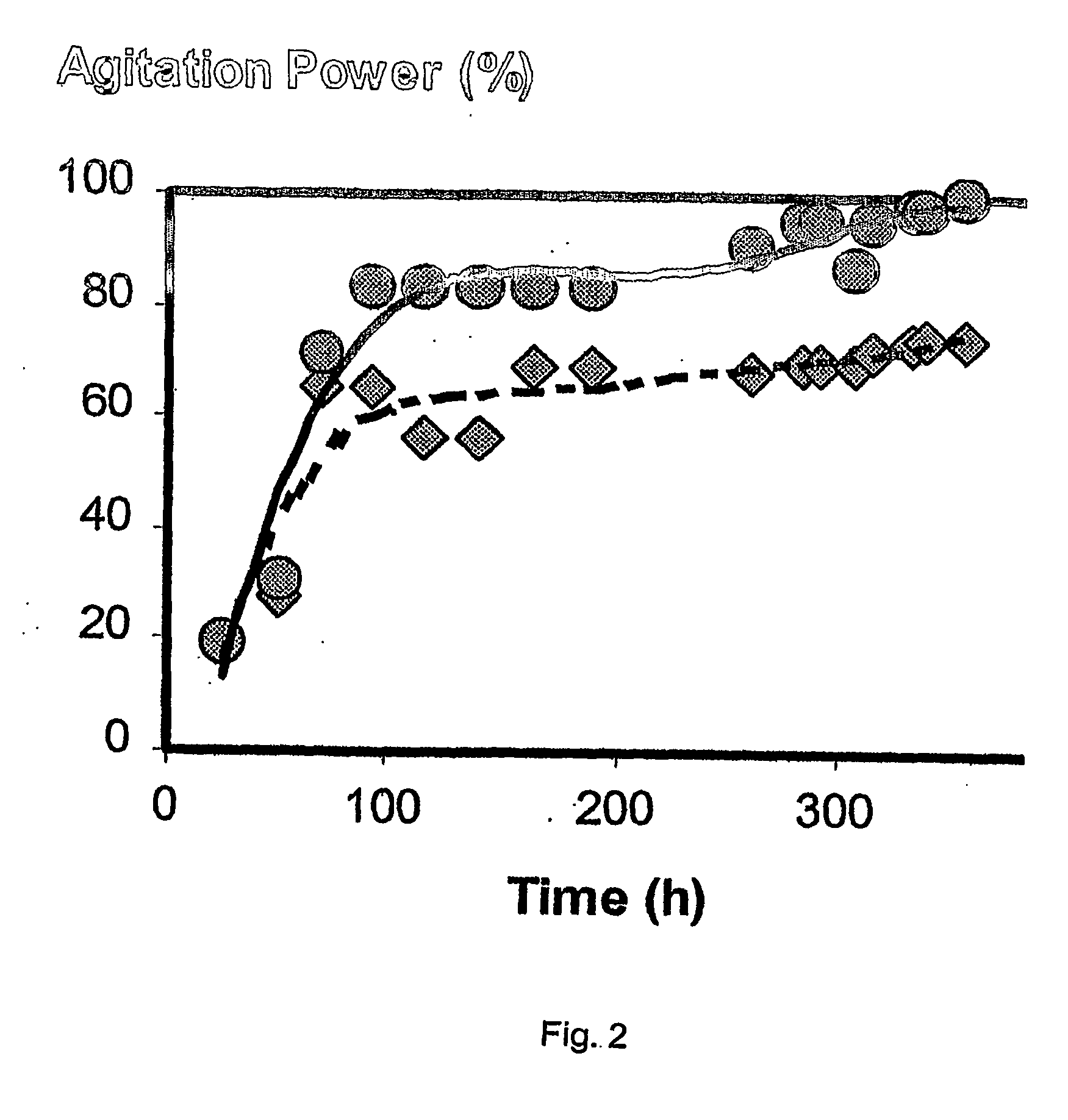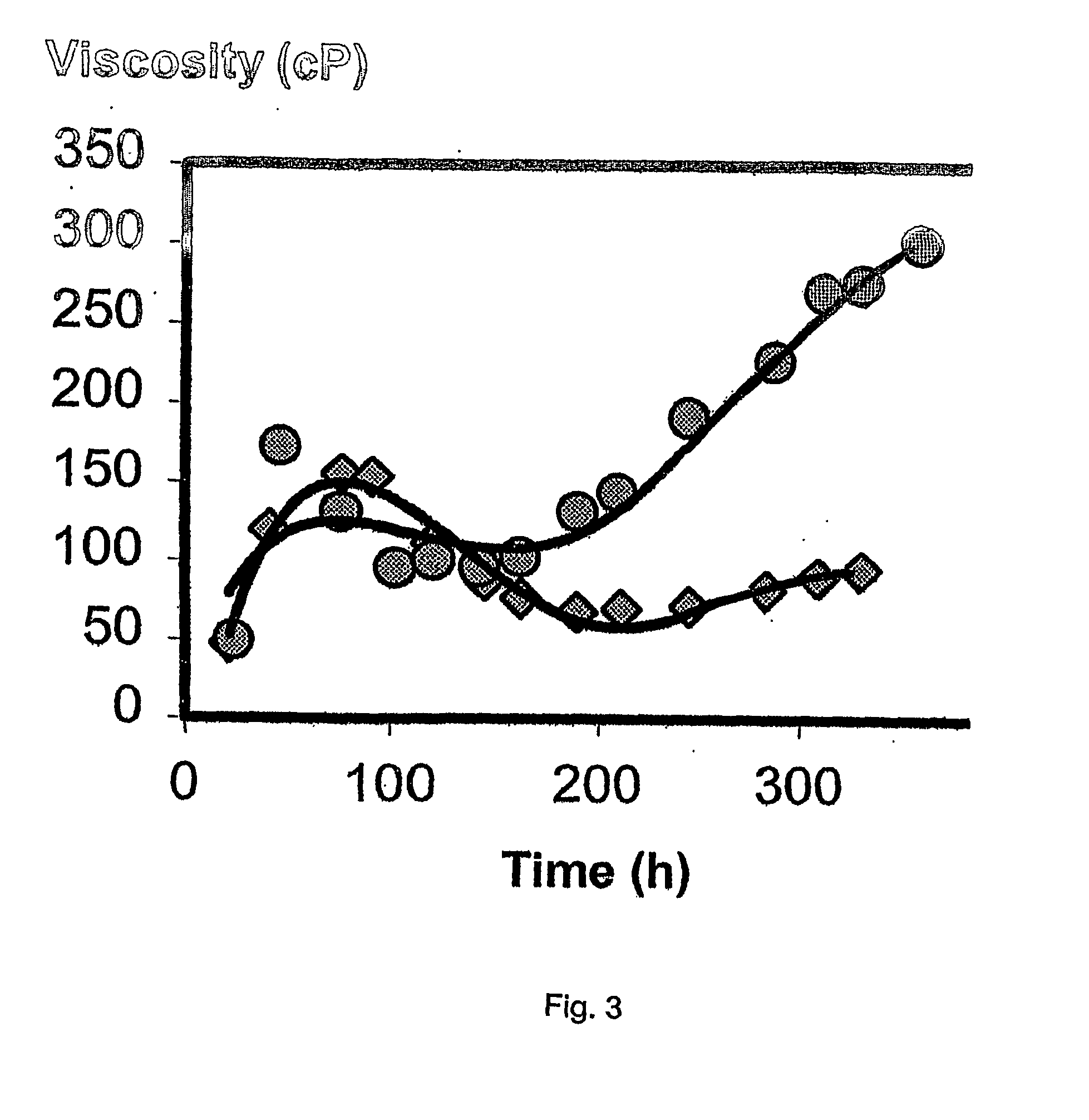Fermentation processes with low concentrations of carbon-and nitrogen-containing nutrients
- Summary
- Abstract
- Description
- Claims
- Application Information
AI Technical Summary
Benefits of technology
Problems solved by technology
Method used
Image
Examples
example 1
[0019]Steptomyces natalensis strain ATCC27448 was cultivated in 2000 ml conical shake containing 500 mL growth medium of the following composition:
g / LGlucose.1H2O30Casein hydrolysate15Yeast Extract (dried)10De-foamer Basildon0.4
[0020] The pH was adjusted to 7.0 by adding NaOH / H2SO4, and the medium was sterilized by autoclavation (20 minutes at 120° C.). The content of a full-grown shake flask was used to inoculate a fermentation vessel containing 6 L medium of the following composition:
9 / LSoybean flower25Soybean oil8Corn Steep (dried)1KH2PO40.45Trace element solution17De-foamer Basildon0.4
[0021] The composition of the trace element solution was as follows:
g / LCitric acid.1H2O175FeSO4.7H2O5.5MgSO4.7H2O100H3BO30.06CuSO4.5H2O0.13ZnSO4.7H2O1.3CoSO4.7H2O0.14
[0022] The temperature and pH of the medium were controlled at 25° C. and 7.0 respectively. Dissolved oxygen concentration was kept above 30% of air saturation, by increasing airflow and / or stirrer speed when necessary. After pre...
example 2
[0025] Another fermentation experiment was carried out using the same procedure as described in Example 1 using a strain of Streptomyces natalensis. This strain is a producer of the anti-fungal compound natamycin. In this experiment two fermentations were run. One experiment was under carbon limitation and nitrogen excess (NH3 level was kept at 150-200 mg / L during the oil feeding phase). The second experiment was run under nitrogen-carbon double limitation during the oil feeding phase, employing a NH / oil ratio of 32 mg / g. Some results are shown in FIGS. 3 and 4. It is obvious that a very significant difference in viscosity was observed between the two modes of fermentation. A low viscosity is very beneficial for efficient process operation. However, a low viscosity coupled with a poor product formation potency would be negative. In this experiment, the product formation was not affected at all by the conditions leading to low viscosity (FIG. 3). The rate of product formation in the ...
example 3
[0026] The information obtained in the experiments described in Examples 1 and 2 was used to improve the actual production process of natamycin on an industrial scale (100 m3 scale). The reduced viscosity allows intensification of the process by faster feeding of the main nutrient soybean oil. The feeding rate of NH3 was proportional to the feeding of oil, as described in the Examples 1 and 2, resulting in carbon-nitrogen double limitation during the feeding phase (which started at about 24 hours after inoculation of the fermentation vessel). The process conditions and medium composition were similar to the small scale experiments described in Examples 1 and 2. Starting with a small increase, the oil feeding rate was increased step-wise from run to run, until a process intensity was reached which could just be maintained on minimal dissolved oxygen tension. FIG. 5 illustrates, the improvement in product output resulting from the higher oil feeding rate was quite substantial.
PUM
 Login to View More
Login to View More Abstract
Description
Claims
Application Information
 Login to View More
Login to View More - R&D
- Intellectual Property
- Life Sciences
- Materials
- Tech Scout
- Unparalleled Data Quality
- Higher Quality Content
- 60% Fewer Hallucinations
Browse by: Latest US Patents, China's latest patents, Technical Efficacy Thesaurus, Application Domain, Technology Topic, Popular Technical Reports.
© 2025 PatSnap. All rights reserved.Legal|Privacy policy|Modern Slavery Act Transparency Statement|Sitemap|About US| Contact US: help@patsnap.com



